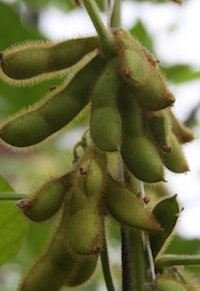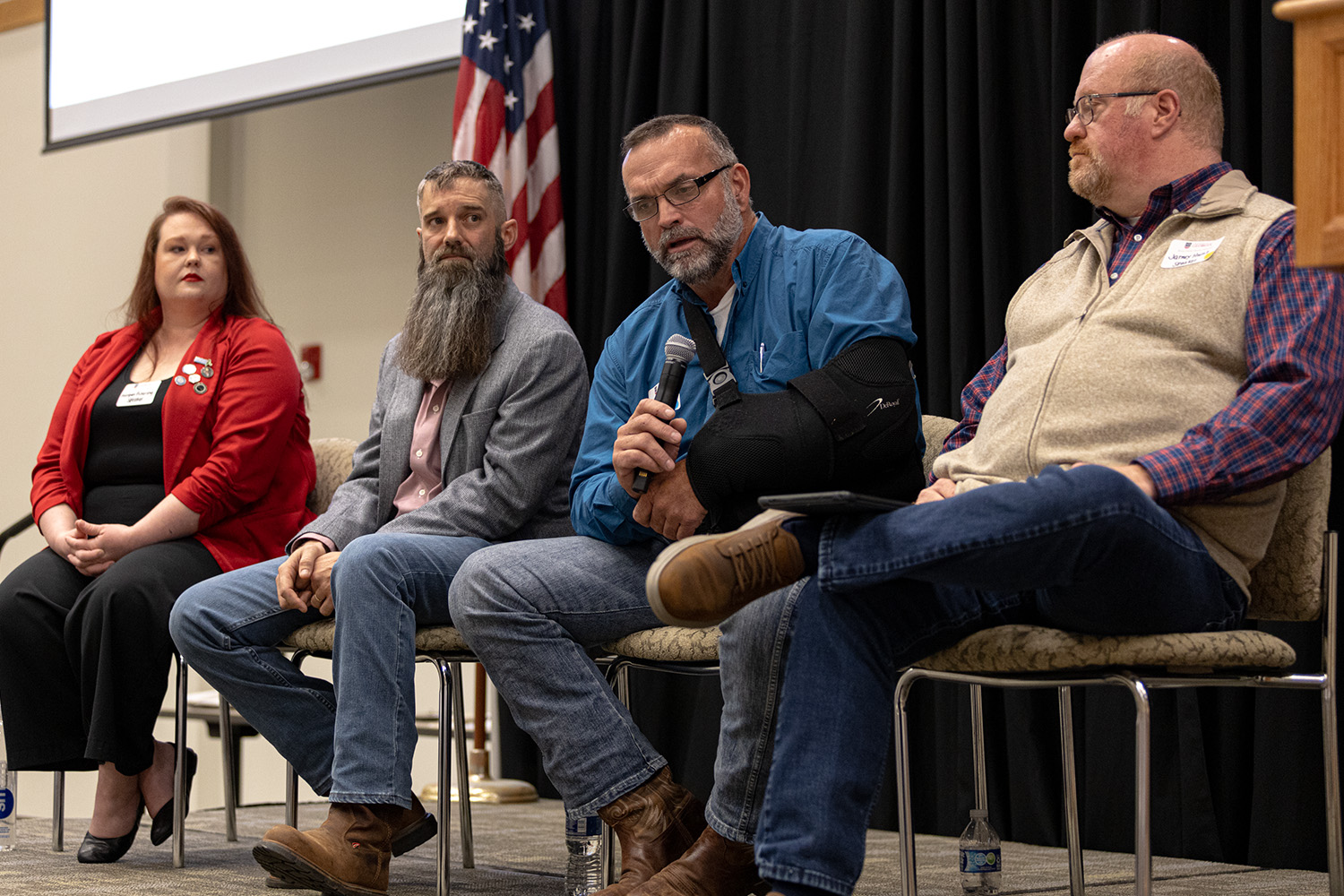In developing countries, the sustainable production of nutrient-dense crops is a critical need. A team of University of Georgia researchers have identified an affordable and local organic practice that can increase nutrient density in soybeans, or edamame, and improve soil health.
In a recently published journal article in Organic Agriculture, researchers described how they applied a local biological inoculum during crop growth to improve soil health and increase macronutrients and micronutrients in soybeans. Led by Associate Professor Dorcas Franklin, doctoral candidates Kishan Mahmud and Laura Ney worked on the study while earning their doctorates in the Department of Crop and Soil Sciences in UGA’s College of Agricultural and Environmental Sciences.
“In many developing countries, meat protein is often not affordable. Different beans such as soybeans, mung beans, garbanzo beans and lentils are the major source of protein. While these beans contain appreciable amounts of proteins, other micronutrients such as zinc or iron often face a shortfall,” said Mahmud, who earned his doctorate in 2019 and is now a research professional in UGA’s Forage and Biomass Breeding and Genetics Laboratory.
Soybeans contain more protein than almost any other cereal or grain crop, and it is estimated that soybeans will be crucial in the mission to achieve global food security by 2050. For these reasons, researchers were interested in testing a local, organic growing technique that could be implemented globally.
The research idea
On a visit to UGA’s Costa Rica campus, Franklin learned about a local farming practice called microorganisms of the mountains (MM), primarily used as pest control. She was also introduced to Ney, who was a UGA intern in Costa Rica at the time and who earned her doctorate in 2019.
“Through our visits to sites using MM, I became more and more intrigued, as MM appeared to be influencing the nitrogen cycle, primarily ammonia volatilization. At the end of this trip I discovered there was the potential to invite Laura Ney to work with me on a research project, in part at UGA Costa Rica,” said Franklin, faculty member in the Department of Crop and Soil Sciences.
The encounter sparked years of research to explore the benefits of the locally derived bio-inoculum that Franklin, Mahmud and Ney refer to as local effective microorganisms (LEM).
The microbial community within the soil can impact nutrient uptake in plants — including nitrogen and phosphorus, which are essential for healthy plant growth. With this knowledge, farmers have begun to add microbial inocula to manure to enhance nutrient retention during composting, as well as for plant nutrient uptake after application. Some inocula are commercially available, but there was a concern that these inoculants would have trouble adapting to foreign environments. Researchers sought to identify bio-inocula that could be grown and used by individual farmers for a local approach that would flourish and be functionally useful at the location where they were applied.
“The concept of developing this type of locally produced microbial inoculant was developed by farmers in Japan and later adopted widely by farmers in Latin America,” said Ney, now an Agriculture and Natural Resources agent with UGA Cooperative Extension. “This is a great success story in observing practices that are being used by farmers because they both see a need for the practice and it is practical for them to adopt into their management system. We then performed rigorous scientific research on those practices so that they can be better understood, improved upon and shared.”
The research processes
In this study, the research team created three different types of bio-inoculant treatment. The first — LEM — was made with decomposing leaf litter from local, healthy pine and hardwood forests. The second — F-LEM — was made without the leaf litter. The third treatment, the control, was well water.
Researchers applied each treatment to the broiler litter from a local, organic chicken farm during composting, applied treated composts to plots, planted edamame, and applied additional LEM, FLEM or control treatments to existing soil approximately one week after edamame emergence from the soil. They carried out this research over three consecutive summers to observe how different soil health parameters were impacted by the addition of the bio-inoculum and how the edamame would respond to the three treatments.
The study found that there was greater biodiversity in the compost with LEM treatment compared to the compost treated with F-LEM and the control compost. Researchers also found that compost treated with LEM, and the direct application of LEM to soil after plant emergence, could improve plant nitrogen availability, help in greater release of calcium and zinc from soil mineral-complex, and enhance the calcium and zinc content in edamame beans.
In 2015 and 2017, the edamame beans treated with LEM had higher calcium, magnesium and zinc concentrations compared to the control group. Recent research indicates that increased levels of carbon dioxide in the atmosphere have led to lower levels of zinc in soybeans. Because the human diet is often deficient in zinc, applying LEM could increase the nutritional density of zinc in soybeans, especially as growers adjust to climate change.
The encouraging implications of the results
“The vision behind my research was to offer the local farmers an easy and affordable way to make LEM on their own and use it to efficiently utilize generated animal waste on-farm, improve soil health and fortify crop nutrition,” Mahmud said.
Mahmud emphasized that locally produced bio-inocula benefit soil biodiversity, which provides resilience against environmental stressors like frost, as found in an earlier research publication, or drought, meaning that plants have a higher survival rate under various environmental conditions.
In addition to the edamame trials, the research team has applied LEM treatments in the Southeastern U.S., the tropical climate of Costa Rica and the temperate region of the Poe River Valley in Italy. Along with chicken litter compost, the team has researched the impact of LEM on swine waste processed using UGA’s biodigester. They have investigated its role on soil health and nutrient density in organically grown winter rye, red turkey winter wheat and pumpkins.
The research is encouraging not only for biodiversity and nutrition, but from an economic perspective, as well.
“I think that the greatest implication is that we are researching a method that is free and available for anyone to use. The source of the inoculum comes from on or near the farm itself and the other ingredients are inexpensive feed store or grocery store products,” Ney said.
Franklin said that there has been interest in Ney’s other LEM publications, mostly in Europe and Asia. Further research is needed to understand whether other locations produce similar results and Franklin is working to secure funding for future research.
Additional assistance on this project was provided by research team members Miguel Cabrera, Mussie Habteselassie, Dennis Hancock, Quint Newcomer, Subash Dahal, Anish Subedi, Aspen Hattabaugh and Brendan Fatzinger.
To learn more about research in the Department of Crop and Soil Sciences, visit cropsoil.uga.edu/research.







